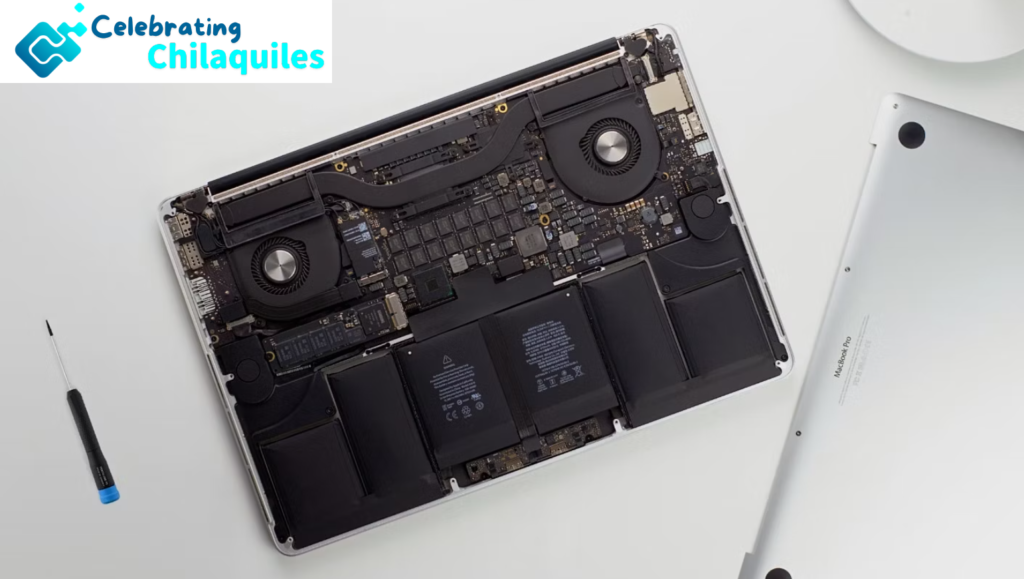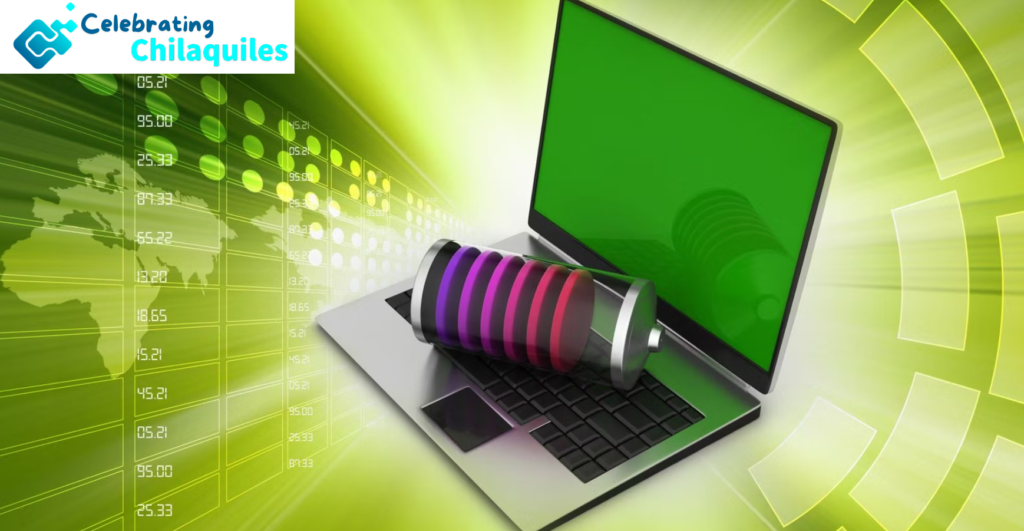Cycling your laptop computer battery correctly is essential to prolong its life and maintain optimal performance. Modern laptops use lithium-ion batteries that, while advanced, still need proper care to avoid rapid degradation. Battery cycling involves a full charge and discharge process that helps keep the battery calibrated and functioning efficiently. Even though lithium-ion batteries are more resilient compared to older types, understanding and practicing proper battery cycling can make a significant difference in your laptop’s battery health over time.
In this guide, we’ll dive deep into the best practices for cycling your laptop computer battery, including the right methods, frequency, and tips to maintain your battery’s health. Whether you’re using your laptop for work, study, or leisure, following these guidelines will help you avoid common mistakes and extend the lifespan of your battery.
What Does Cycling a Laptop Computer Battery Mean?
Cycling a laptop computer battery refers to the process of discharging it down to a low level and then fully recharging it. This practice is used to recalibrate the battery’s internal gauge, ensuring that it accurately displays the remaining charge. Unlike older battery technologies, lithium-ion batteries do not require frequent full discharges, but periodic cycling can still be beneficial.
By allowing the battery to discharge to around 20-30% before recharging to 100%, you can help the battery maintain its maximum capacity and ensure that the laptop’s battery gauge remains accurate. This is especially important if you notice that your battery level readings are inconsistent or your laptop shuts down unexpectedly.
How Often Should You Cycle Your Laptop Computer Battery?
It’s recommended to cycle your laptop computer battery about once every 1-2 months. This interval helps keep the battery in good condition without over-stressing it. For daily use, it’s sufficient to let the battery discharge to around 20-30% before recharging, rather than letting it drop to 0% frequently, which can harm the battery.
Frequent deep discharges (below 20%) can lead to unnecessary wear and reduced battery lifespan. Instead, aim for partial discharges; your everyday use will typically suffice to keep the battery balanced. Cycling once every month or two ensures that your laptop’s battery management system remains accurate without causing undue stress on the battery itself.
The Correct Way to Cycle Your Laptop Computer Battery
To properly cycle your laptop computer battery, discharge it to about 20-30% before recharging it to 100%. This simple process helps recalibrate the battery and maintain its overall health. Here’s a step-by-step approach:
- Charge to Full: Start by fully charging your laptop battery to 100%. Use your laptop on battery power without plugging it in until it reaches around 20-30%.
- Recharge Fully: Once the battery reaches the target level (20-30%), plug your laptop back in and allow it to charge uninterrupted back to 100%.
- Avoid Extreme Discharges: Deep discharging (to 0%) can put extra strain on the battery, so aim to keep the discharge level at 20% or above.

Best Practices for Charging Your Laptop Computer Battery
For the best results, keep your laptop computer battery charge between 20-80% to maximize its lifespan. Staying within this range reduces stress on the battery and slows down the wear process. Here are some additional tips:
- Don’t Keep It Plugged In Constantly: Leaving your laptop plugged in continuously can lead to a state of perpetual high charge, which is not ideal for lithium-ion batteries. Try to use the battery regularly, even if you use your laptop mainly on AC power.
- Mind the Temperature: Heat is a major enemy of lithium-ion batteries. Avoid charging your laptop in very hot environments, and ensure that there’s good airflow to keep the laptop cool during charging.
Common Myths About Cycling Laptop Computer Battery
One common myth is that you need to fully discharge your laptop computer battery regularly. This is outdated advice that applied to older battery types, like nickel-cadmium or nickel-metal hydride, but it’s not suitable for modern lithium-ion batteries. Fully discharging your battery frequently can actually reduce its lifespan rather than help it.
- “Keeping Your Laptop Plugged In Will Overcharge the Battery.” Modern laptops are equipped with smart charging technologies that stop charging once the battery reaches 100%. However, consistently maintaining a full charge is not optimal and can contribute to gradual capacity loss over time.
- “Battery Calibration is the Same as Cycling.” Calibration and cycling are similar but serve different purposes. Calibration is meant to reset the battery gauge and ensure accurate charge level reporting, while cycling is more about general battery health maintenance.
Additional Tips to Extend Your Laptop Computer Battery Lifespan
Beyond cycling, adopting good habits like managing brightness, using power-saving modes, and avoiding extreme temperatures can greatly extend your laptop computer battery’s lifespan. Here are some practical steps:
- Optimize Settings: Utilize power-saving settings like reducing screen brightness, turning off unnecessary hardware (e.g., Bluetooth), and closing background apps that drain power.
- Store Properly: If you’re storing your laptop for an extended period, charge the battery to about 50% and turn the device off. Batteries stored at full charge or fully discharged can degrade faster.
- Update Software Regularly: Keep your laptop’s operating system and drivers up-to-date. Manufacturers often release updates that improve battery performance and power management.
Conclusion
Proper cycling of your laptop computer battery is a key component of effective battery maintenance. By following the recommended cycling practices and incorporating these battery care tips, you can significantly extend the life of your laptop’s battery and maintain its performance over time. Remember, while technology has evolved, taking a few simple steps to care for your battery can go a long way in ensuring your laptop serves you well for years to come.

FAQs About Cycling Laptop Computer Battery
Is It Good to Cycle a Laptop Battery?
Yes, it is good to cycle a laptop battery occasionally to maintain its accuracy and health. Cycling helps recalibrate the battery, ensuring that the battery gauge shows accurate charge levels. However, it’s not necessary to cycle frequently—about once every 1-2 months is sufficient. Over-cycling, especially with full discharges, can lead to increased wear and reduced lifespan, so moderate cycling is recommended.
How Many Cycles Can a Laptop Battery Take?
A typical laptop battery endures between 300 to 500 full charge cycles before its capacity significantly diminishes. However, this number varies based on the battery’s quality, usage patterns, and the specific battery management features of your laptop. Modern lithium-ion batteries retain most of their capacity for the first 300 cycles; after that point, their capacity gradually decreases.
How to Cycle a Battery on a Laptop?
To cycle a battery on a laptop, discharge it to about 20-30% and then fully recharge it to 100%. This cycling process should be done about once every 1-2 months to recalibrate the battery. It’s not necessary to let the battery drop to 0%, as this can add unnecessary wear. Instead, aim for moderate discharges and recharges within the optimal range of 20-80% during normal use.
What Does Resetting a Laptop Battery Do?
Resetting a laptop battery, often referred to as calibration, helps to recalibrate the battery sensor so that it accurately reflects the charge level. This process involves a full discharge followed by a complete recharge, and it can be useful if the battery gauge is giving incorrect readings or if the laptop shuts down unexpectedly. Resetting can improve the accuracy of the battery indicator but does not restore lost capacity from aging or wear.
How Do I Keep My Laptop Battery Healthy?
To keep your laptop battery healthy, avoid extreme charge levels, keep it between 20-80%, and avoid exposing it to high temperatures. Here are some key tips:
- Use power-saving settings: Reduce screen brightness, turn off unnecessary hardware, and manage background processes.
- Avoid deep discharges: Regularly discharging to very low levels (below 20%) can stress the battery.
- Keep it cool: Excessive heat accelerates battery degradation, so avoid using your laptop in hot environments and ensure good ventilation.
How Do I Cycle My Battery?
To cycle your battery, use your laptop on battery power until it reaches 20-30%, then plug it in and charge it back up to 100%. This process helps maintain the battery’s calibration and can be done once every month or two. It’s a simple yet effective way to keep your battery’s performance optimized without overdoing full discharge cycles, which can reduce its lifespan.

